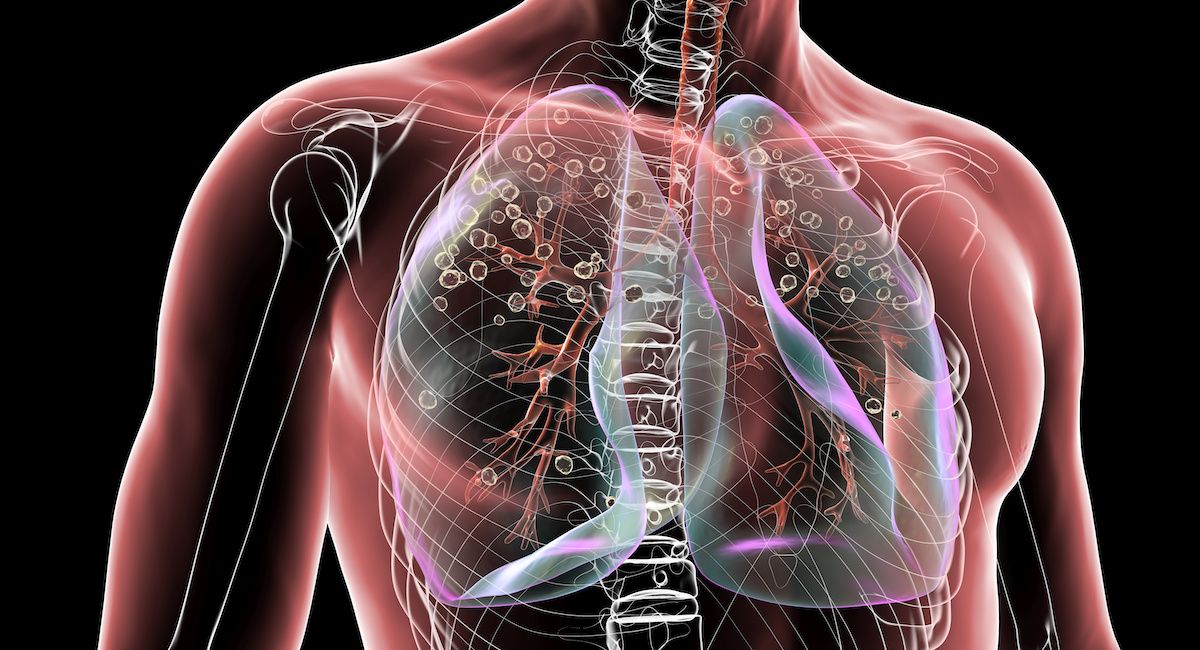- Center on Health Equity & Access
- Clinical
- Health Care Cost
- Health Care Delivery
- Insurance
- Policy
- Technology
- Value-Based Care
Experts Spotlight New Thinking on Restrictive Lung Function at ERS 2025
Experts at European Respiratory Society (ERS) Congress 2025 highlight the critical link between reduced lung function and increased cardiovascular disease risk, urging early intervention and awareness.
People living with restrictive lung function impairments face significant health consequences that extend far beyond their breathing, according to experts who presented at the European Respiratory Society (ERS) Congress 2025 in Amsterdam, Netherlands.
By recognizing restrictive impairments as clinically meaningful and preventable, the respiratory community can reframe the approach to chronic disease prevention on a global scale. | Image credit: Dr_Microbe - stock.adobe.com

Rethinking Chronic Lung Disease: Burney’s “Small Lung Syndrome”
Peter Burney, MD, emeritus professor of respiratory epidemiology at Imperial College London, challenged current classifications of chronic lung disease by proposing a new category: “small lung syndrome.” He noted that while chronic obstructive pulmonary disease (COPD) has long been tied to tobacco smoking and air pollution, global data reveal striking disparities in mortality rates that these risk factors alone cannot explain.
Burney’s concept describes individuals with persistently low lung volume, even in the absence of obstructive disease. This condition, he argued, is strongly linked with comorbidities such as hypertension, atherosclerosis, and diabetes. He called for the establishment of a new International Classification of Diseases code for small lung syndrome to ensure more accurate diagnosis and epidemiologic tracking.
Tracking Lung Function Over Time: Dharmage on Early Development
Shyamali Dharmage, PhD, professor of epidemiology at the University of Melbourne in Australia, expanded the conversation by examining lung function trajectories from birth through adulthood. Using data from the Tasmanian Longitudinal Health Study and other cohorts, she showed that children with low initial lung function often remain on a downward trajectory into adulthood. However, she emphasized that “catch-up” growth is possible and represents a critical opportunity for intervention.
"We need to take early action to reduce long-term diseases—so small lungs...and even [declining lung function] can lead to multimorbidity, and especially restrictive deficits can lead to cardiometabolic diseases. Therefore, we need to detect these conditions early and do something about it to help these people who are deviating from the normal lung function pathways," she warned.
Dharmage highlighted the importance of monitoring lung function early and presented the Lung Function Tracker, a free tool endorsed by ERS. She also discussed ongoing pre-COPD clinical trials, including studies testing triple therapy to slow decline in individuals with low lung function trajectories. Her takeaway was clear: Optimizing lung growth in childhood and adolescence could prevent not only respiratory diseases but also cardiometabolic conditions later in life.
The Global Burden in Low- and Middle-Income Countries: Ozoh’s Perspective
Obianuju Beatrice Ozoh, MD, associate professor at the University of Lagos and vice president of the Pan African Thoracic Society, drew attention to the disproportionate burden of small lungs in low- and middle-income countries (LMICs). In Nigeria, for example, more than 70% of adults 40 years or older show evidence of restrictive lung impairment, while a quarter of medical students studied had restrictive lung disease.
Ozoh identified multiple drivers—maternal malnutrition, low birth weight, HIV, biomass fuel exposure, and socioeconomic factors—that combine to limit lung development. A poll of symposium participants supported her conclusion that improving maternal health care could be the single most impactful intervention for prevention. She underscored that small lungs are far from benign: They contribute to reduced quality of life and heightened cardiometabolic risk.
“Improving socioeconomic status and eradicating poverty is fundamental to improving lung health and overall cardiovascular health as well, but we can’t do this if we don’t have access to diagnostics to even measure lung function,” Ozoh recommended.
Beyond the Lungs: Janson on Cardiovascular Risk
Christer Janson, MD, from Uppsala University, extended the discussion by presenting compelling evidence that low forced vital capacity (FVC) is a powerful predictor of cardiovascular and metabolic disease. Drawing on data from the BOLD and NHANES studies, Janson showed associations between low lung volumes and increased risk of hypertension, diabetes, and stroke.
He argued that lung capacity should be integrated into cardiovascular and diabetes risk calculators, given its predictive precision. “We may be missing treatable cardiovascular disease in patients with low FVC,” he cautioned, suggesting that bidirectional screening could catch conditions earlier and improve outcomes.
Across these perspectives, several actionable priorities emerged:
- Establish a dedicated ICD code for “small lung syndrome”
- Implement public health initiatives to improve maternal and child health, nutrition, and pollution reduction
- Deploy lung function trackers in clinical practice to identify individuals on abnormal trajectories early
- Explore triple therapy and other interventions in pre-COPD clinical trials
- Include FVC in cardiovascular and diabetes risk assessment tools.
The symposium’s overarching message was that small lungs matter—not only for respiratory outcomes but for systemic health throughout life. By recognizing restrictive impairments as clinically meaningful and preventable, the respiratory community can reframe the approach to chronic disease prevention on a global scale.
Ozoh summarized by issuing a call to action for respiratory health professionals: “We need to recognize that small lung is not innocuous. So when we see restrictive impairment, we shouldn’t just say that’s OK, everything is fine, you don’t have airway obstruction. We need to track this. We need to take action.”
